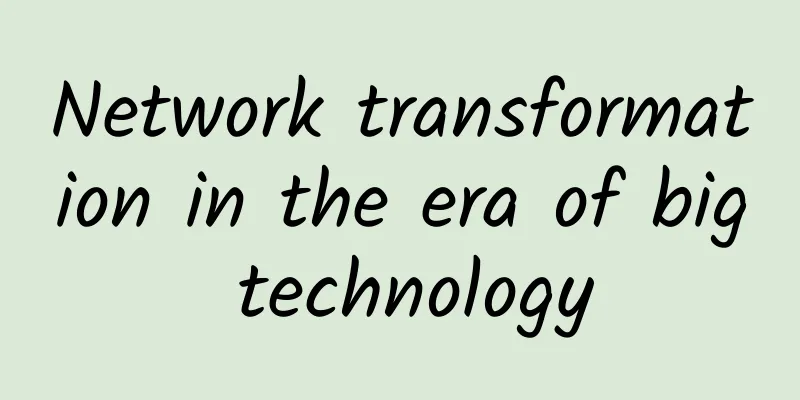The communication AI market will reach $38.8 billion in 2031. The integration of 5G/6G and AI can bring multiple benefits.

|
The global deployment of 4G and 5G is faster than the advancement of commercial services, and 6G is expected to arrive by 2030. How can telecom operators embrace the future in the right way? Currently, the global telecommunications industry is thinking about this issue. One of the major directions is AI. Representatives such as Japan's NTT Docomo and South Korea's SK Telecom are actively promoting the integration of AI and communications to find new growth space. According to data from research institutions, the size of the global communications AI market will be only US$1.2 billion in 2021, and will grow to US$38.8 billion by 2031, with a compound annual growth rate of 41.4%. NTT Docomo actively applies AI technologyNTT Docomo plans to invest heavily in cloud computing AI applications in the future. For example, it demonstrated an AI service that can predict brain changes based on MRI scans and medical data. Japan has a rapidly aging population and the elderly are more susceptible to dementia. NTT Docomo's new service can help the elderly. NTT Docomo is currently collecting data from about 500 individuals and about 150,000 MRI images to train AI. It is estimated that the new service will be commercially available in 2025. According to predictions from relevant Japanese agencies, approximately 20% of Japanese people will have some degree of cognitive impairment before 2025. Early detection and early prevention are effective measures. In addition to the commercial market, NTT Docomo also pays close attention to the consumer market, and the company plans to launch a VR avatar creation service by March 2025. Through this service, users only need to enter text to create a personalized avatar, which can help users express themselves digitally and enhance communication. South Korea's SK Telecom focuses on AI strategyLike Japanese operators, South Korea's SK Telecom is also preparing to move closer to AI. It has formulated the so-called "AI Pyramid Strategy", which includes AI infrastructure, AI transformation, and AI services. Among the three major parts, SK Telecom attaches the most importance to AI infrastructure, which includes AI data center, AI semiconductor and multimodal LLM. SK Telecom declared: "With the growth of the AI market, data centers are in short supply and new social problems are emerging, such as increased electricity consumption and excessive carbon dioxide emissions. To resolve various problems, SK Telecom will launch energy-saving solutions, such as the introduction of liquid cooling systems and hydrogen fuel cells. In the future, SK Telecom will also enter the AI hosting industry and combine energy-saving solutions with Sapeon NPU (neural processing unit) and high-bandwidth memory (HBM) developed by SK Hynix to increase profit margins." Entering the era of AI transformation, SKT Telecom will continue to seek breakthroughs in core areas, namely mobile, broadband, and enterprise services, while also advancing into new areas such as travel, AI healthcare, media, and advertising. SKT is preparing to add AI mobile phone service functions, providing a variety of AI services by analyzing and reasoning about call content. For example, AI will analyze call history and call content to provide users with call suggestions, and AI can also complete real-time translation tasks. How does AI affect the communications industry?Influenced by the trend, the telecommunications industry has shown increasing interest in AI in the past one or two years. Previously, they did not take it seriously, but now many companies have suddenly come up with their own "AI strategies." Still, only 21% of service providers are currently using generative AI. Cisco, for example, has pledged to invest $500 million in an “AI Ethernet fabrics” project, which may seem like a lot, but it’s not a huge amount for a telecom giant. It is estimated that the size of the global communications AI market will be only US$1.2 billion in 2021, and will grow to US$38.8 billion by 2031, with a compound annual growth rate of 41.4%. By integrating 5G or 6G with AI, telecom operators will gain the following benefits:Build a more reliable and faster infrastructure. AI-driven devices and applications can access and process data in real time, improve response speed, and enhance scalability. Strengthen virtual network management. 5G combined with software-defined networking (SDN) and network function virtualization (NFV) can allow AI to play a key role in the virtual network management process. AI can detect loopholes and prevent revenue loss. Machine learning can analyze order data. AI can analyze historical data to help operators predict demand, prevent customer churn, and find potential growth opportunities. AI can also help operators scientifically plan networks, develop marketing plans, and develop more services. By dynamically adjusting throughput, routing, and configuration, AI algorithms can help operators optimize network resources, maximize network efficiency, reduce operating costs, and improve service quality. |
<<: What is a Layer 3 switch and how does it work?
>>: How Fiber Optic Networks Can Boost Small Business Operations
Recommend
Laying the foundation for digital finance | H3C launches S12500G-EF, a new generation of green smart switches
On April 25, New H3C Group, a subsidiary of Tsing...
5G messaging has started commercial trials. Can it change the current instant messaging landscape? Will it replace WeChat?
Since the release of the "5G Message White P...
The construction enthusiasm remains unabated, and 5G will drive the full resumption of work and production in the industrial chain
The novel coronavirus pneumonia epidemic that beg...
How to test your network with PerfSONAR?
[51CTO.com quick translation] PerfSONAR (https://...
Linux TCP/IP protocol stack, data sending and receiving process, TCP protocol characteristics
It is no exaggeration to say that today's Int...
Why 5G and IoT security is more important than ever
[[421462]] The convergence of IoT and 5G is a gam...
How to save records when surfing the Internet? You need to know the relationship between Session and Cookie
Why use Session and Cookie? In a nutshell, becaus...
Huawei CloudEngine 16800 becomes the "new engine" of Beijing Institute of Technology's National New Energy Vehicle Monitoring and Management Platform
On August 9, 2019, Huawei held the "Unleashi...
my country's cumulative investment in 5G network construction exceeds 260 billion
On February 23, the Mobile World Congress in Shan...
Where is the future research direction of communications?
[[284708]] A few days ago, I attended the second ...
IMIDC Hong Kong/Taiwan Server E3 Series $90 off per month starting at $39/month
IMIDC is a local operator in Hong Kong. It has br...
Operators' efforts in 5G messaging may accelerate industry reshuffle
5G messages continue to make new progress. Recent...
Edge computing is the key to unlocking 5G’s true potential
[[434589]] The hype for 5G has been an increasing...
Wu Jiangxing, Academician of the Chinese Academy of Engineering: Opening up a new 6G paradigm for multi-objective sustainable and coordinated development and building a new foundation for intelligent network
As 5G network construction accelerates, related a...
5G promotes the development of industrial Internet, and we need to pay attention to these two points in the future
The Industrial Internet is the key cornerstone an...









